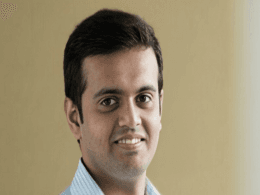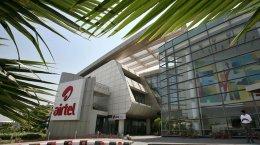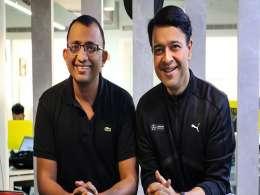Mobile VAS player ValueFirst Messaging, which has received a funding of Rs 70 crore from Headland Capital Partners (formerly HSBC Private Equity Asia), says it will continue to follow the acquisition-led growth path. Established in 2003 as a virtual mobile operator with clear focus on delivering messaging services, it has today evolved into end-to-end business communication solution provider covering the various platforms like SMS, Voice, and WAP. It has added most of these capabilities via acquisitions as opposed to building it grounds-up. For the company, which raised its startup capital only in 2006, it is confident of making a market debut with a Rs 300-crore IPO plan by next year. In a quick interview with VCCircle, Vishwadeep Bajaj, Founder & CEO, ValueFirst, talks about the acquisition strategy, which has been integral to the company's growth. Excerpts:
Inorganic growth appears to be an integral part of your corporate strategy given the diverse acquisitions in sectors ranging from telecom software (Packet Shaper) to Mobile VAS (CellNext) to social media (Tagg.in). How is this panning out for you?
When we began in 2003, we acted as a Virtual Mobile Operator with clear focus on delivering messaging services. Soon, we realized that the communication requirements of our customers are not only limited to messages, but that these enterprises have different needs across various platforms like voice, USB, WAP or opt-in requirements. Instead of building our own capabilities in these areas and get these off the ground,which is time consuming, we went for an inorganic growth route. We are now clearly positioned as a muti-modal complete device and platform agnostic business communication solutions company in India. So, while the key driver for all the inorganic acquisitons have been growth, the basic premise has been to build capabilities to enter newer growth areas through acquisitions than to get them off the ground ourselves.
What is the inorganic growth strategy post this round of funding?
So, there are three legs to the acquisitions that we are planning. Firstly, on enhacing capabilities on a broader portfolio, we want to acquire an email company. We do not have an expertise here. We want to actively look at companies which have a strong technology play around this area, and have gained good traction.
The second leg to the acquisition story is that we feel we are suitably positioned to acquire our competitors in the wake of new TRAI policies which impose restrictions on bulk SMS. Going forward, it is clear that only those organisations which are TRAI-compliant, can thrive in the industry. We have always been compliant with the telecom regulators in the country as our messages are not spam. We provide two kinds of services - transactional and promotional. While a transactional service is one where one gets an update as an SMS for every transaction done (withdrawing money from the ATM, making a payment online, status alerts for travel)- this is the information which is needed by the user. On the promotional side also, we don't spam but send across to the "rightful recipient" who demands that kind of information. We have a competetive advantage compared to most of these companies and we could emerge as a dominant player acquiring them.
The third is the geographical expansion route. We are very actively scouting for good companies in the US. There are research reports which suggests that in the times to come, over 80% of enterprise value added communication will come from the US. We are also open to acquring companies in the UK given that it is a more mature market. The way we are structured, I think we can leverage the India advantage here and make these companies more operationally positive. So, if there are companies in the West which are recording good revenues but with lower margins, we can provide a lot of advantage in terms of operational cost structures. We have operations in Middle East for over two years now with only the sales and marketing team based there and the core products team operating out of here.
What would be the ticket size of these acquistions and how many are you targeting?
It depends on the acquisition that we do. There is a thought if we should acquire one big company or many small companies. We are still figuring it out. But, we have a kitty of about Rs 100 crore for our inorganic growth strategy.
By when do you see the IPO happening and what size?
We are looking at a Rs 250-300 crore IPO by mid-next year. This is the last round before the IPO.
What are the growth drivers for the company going forward? What has really helped you?
We are very enterprise focussed as opposed to a very consumer centric approach. We are the largest Enterprise VAS player in the country – serving over 2 billion messages every month - making us the largest messaging company in India and one of the largest telecom messaging companies in the world. We have over 3,000 marquee enterprise customers in different segments and over 80+ channel partners. We should be Rs 250-crore in revenue by next year. With 3G rolling out in India, we are confident that we have competetive capabilities to take advantage of the technology adoption.
I think what has really helped us is the fact that we built a right kind of organizational structure. We have been lucky to add the right kind of people at the right time in our company, so that while we were growing, we continued to build capabilities and leverage on the same without having to look outside.






